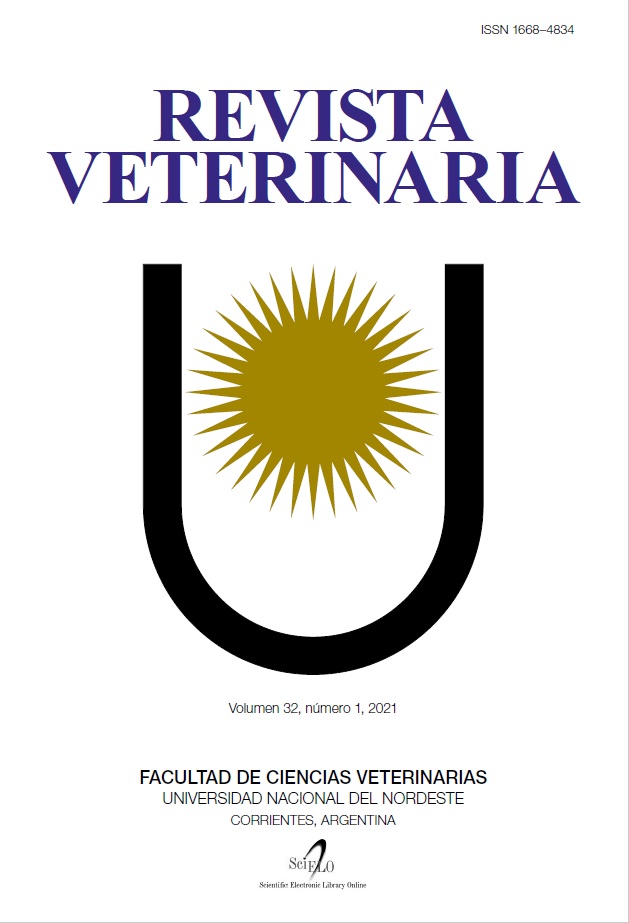Resolution of a lingual necrosis for canine leptospirosis
DOI:
https://doi.org/10.30972/vet.3215647Keywords:
canine, glossitis, necrosis, vasculitis, leptospirosisAbstract
The present study describes the clinical resolution of a tongue necrosis associated whit an acute renal failure due to leptospirosis. A 4 year old male Boston terrier canine was present with a tongue that showed changes of color, consistency, sensibility and lack of pulse. Regarding the renal profile urea (183 mg/ dl) and creatinine (1,8 mg/dl), values were increased and micro agglutination technique gave titers 1/3200 of Leptospira interrogans serovars, Ballum castellonis y Canicola canicola. Increased antibody titles and clinical manifestations, confirmed the diagnosis of acute kidney damage. The treatment began with fluid therapy using Ringer lactato and dextrose 5%. As leptospirosis was possible, antibiotic treatment was applied (penicillin combined with estreptomicina). Once the patient was stable, partial glosectomy was realized. Nevertheless, necrosis continued, so it was decided to use 1 mg/kg of dexametasona parenteraly during three days an then a lower dosis. Eight days later, the patient was recovered, although isostenuric urine density continued, urea (87 mg/dl) and creatinine (0,8 mg/dl) values decreased and the patient was stable. Despite corticosteroids are not recommended in acute renal failure in this case were used to control vasculitis. Considering the immune origin of vascular injury, treating the initial cause isn´t enough, reason why immunosuppressive drugs are recommended.Downloads
References
Bandeira CT, Athanazio DB, Stambovsky SA, Seguro AC. 2008. Renal involvement in leptospirosis; new insights into pathophysiology and treatment. The Braz Journal of Infect Dis 12: 248-252.
Gasken F. 2008. Leptospirosis canina. Actas del Congreso de la Asociación Mundial de Veterinaria de Pequeños Animales, Dublin, Irlanda, 2008.
Innera M. 2013. Cutaneus vasculitis in small animals. Vet Clin Small Anim 43: 113-134.
Sykes JE, Reagan KL. 2019. Diagnostic, treatment and management of Leptospirosis in dogs. Today`s Veterinary Practice ep/oct; https://todaysveterinarypractice.com/diagno- sis-and-treatment-of-leptospirosis-in-dogs.
Swann JW, Priestnall SL, Dason C, Chang YM, Garden OA. 2015. Histologic and clinical features of primary
and secondary vasculitis: a retrospective study of 42 dogs
(2004-2011). Journ Vet Diagn Investig 27: 489-496.
Yang C. 2007. Leptospirosis renal disease: understanding
the initiation by tall-like receptors. Kidney Internat 72:
-925.
Downloads
Published
How to Cite
Issue
Section
License
Revista Veterinaria (Rev. Vet.) maintains a commitment to the policies of Open Access to scientific information, as it considers that both scientific publications as well as research investigations funded by public resources should circulate freely without restrictions. Revista Veterinaria (Rev. Vet.) ratifies the Open Access model in which scientific publications are made freely available at no cost online.










.jpg)
.jpg)



